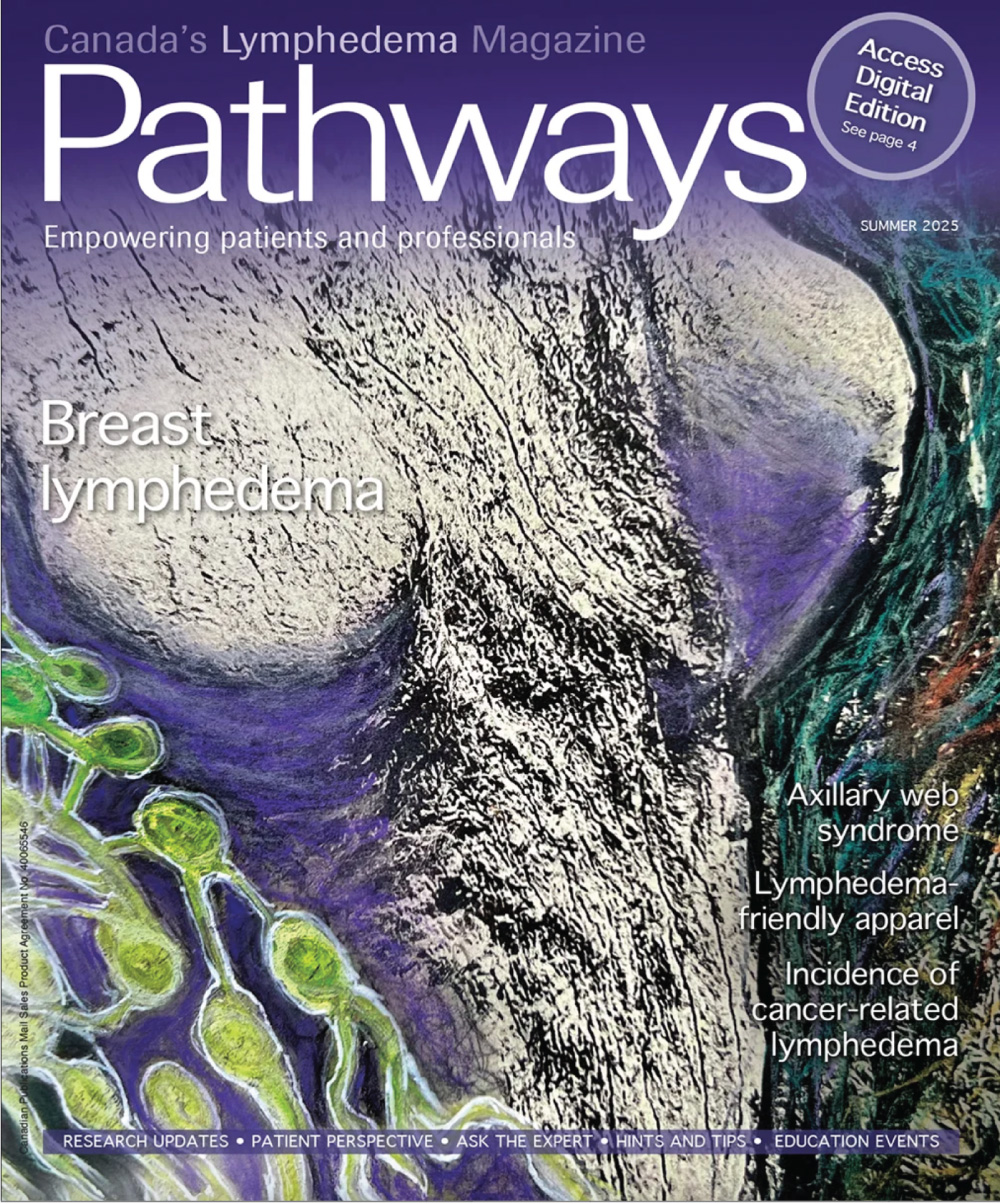Breast lymphedema after breast conserving surgery
Prospective surveillance, evaluation and diagnosis
Cheryl Brunelle
Originally published in Pathways, (Volume 14, No. 3 Summer, 2025). Copyright (2025), Canadian Lymphedema Framework. Reprinted with permission.
Breast lymphedoema is a common condition following breast-conserving surgery for breast cancer, with incidence rates as high as 94%. Symptoms include pain, heaviness, swelling, pitting edema, peau d’orange, nipple-areolar complex changes, and erythema. Risk factors are not well-defined but may include tumor size, body mass index, incision location, prior biopsy, axillary lymph node dissection, radiation, and chemotherapy. Diagnosis involves symptom assessment, clinical examination, and objective measures like tissue dielectric constant (TDC), ultrasound, and imaging. Treatment includes manual lymphatic drainage, compression garments, kinesiotaping, scar management, and exercise. Awareness, screening, and further research are essential to improve diagnosis and treatment guidelines.
Key takeaway points for clinicians managing breast lymphedema after breast-conserving surgery:
- High Incidence: Breast lymphedema is common, with rates up to 94%, particularly within 3-6 months post-radiation.
- Symptoms: Clinicians should assess for heaviness, swelling, pain, pitting edema, peau d’orange, nipple-areolar complex changes, and erythema.
- Risk Factors: Potential risk factors include tumor size, elevated BMI, incision location, prior biopsy, axillary lymph node dissection, radiation, and chemotherapy.
- Diagnosis: Use a combination of symptom assessment, clinical examination, and objective tools like TDC, ultrasound, and imaging. No gold standard exists, so a multimodal approach is recommended.
- Treatment: Employ a multi-modal approach, including manual lymphatic drainage, compression garments, kinesiotaping, scar management, and exercise.
- Screening: Incorporate breast lymphedema screening into routine follow-up for breast cancer patients, alongside arm lymphedema surveillance.
- Education: Educate patients on signs, symptoms, and the importance of timely diagnosis and referral.
- Future Directions: Further research is needed to define risk factors, diagnostic thresholds, and evidence-based treatment guidelines.
Cheryl Brunelle PT, MS, CCS, CLT is an APTA Board Certified clinical specialist in physical therapy and the associate director of the Massachusetts General Hospital Breast Cancer-Related Lymphedema Research Program. Her research interests currently include screening, early diagnosis, diagnostic techniques and breast lymphedema.





